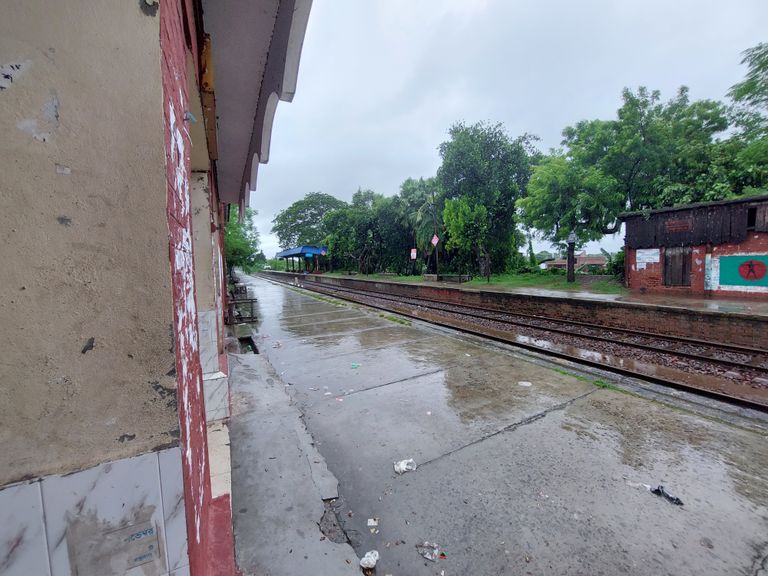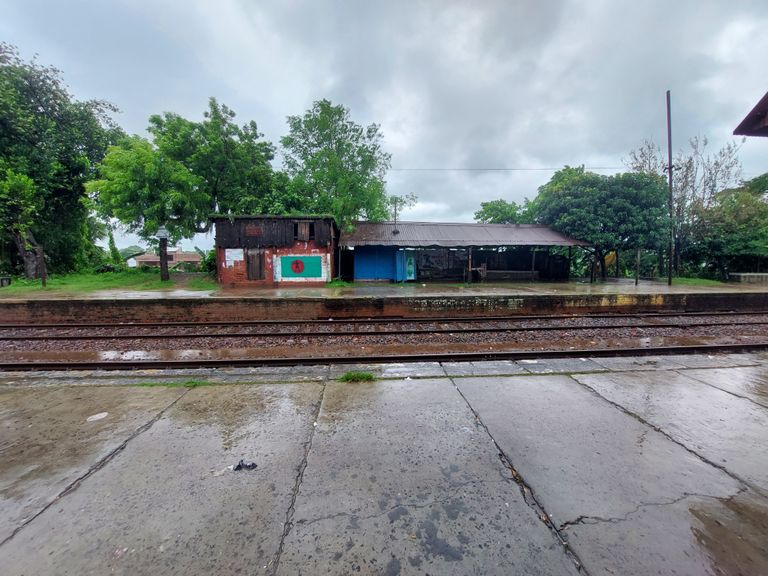
The country's first historical double-decker Alamdanga railway station, here you can see many types of exotic trees. Green nature all around. Alamdangar Railway Station is one of the highest and double storey railway stations in the Asian continent. Chuadangay District Alamdanga Thana Railway Station. Alamdanga railway station holds the unique honor of being the only double-decker station in Bangladesh. The railway station is a beautiful monument of the nobility and immense glory of the railway department during the British rule. It is believed that the construction of this railway station was started within a few years of the first railway in India. At that time, due to the establishment of this railway line through the bill, the railway line was established very high. That is why a two-storey station building may have to be constructed here due to practical necessity.

Rainy favorite railway station. Nature takes its own form after rain.No matter if it rains or storms, if the train stops on the number two line, you have to get wet. If there is a woman, old or sick person, there is no question. An overbridge without logical foundation is here. From where you can also go to number two line name. More than that, there is no passenger shelter on line number two.
The photo was taken today in the afternoon in the rain.
According to railway sources, Alamdanga station in Chuadanga was recognized as the first railway station in the country. During the British period, the first railway of Bangladesh was opened on November 15, 1862 from Darshana in Chuadanga district to Jagati in Kushtia district. At that time Alamdanga railway station started its journey as the first railway station of Bangladesh. This two-storey building station is the tallest in the Asian continent.
According to history, the railway station was once a stronghold of the indigo British. From here they planned and managed the activities related to indigo cultivation in the region. An Englishman lived on the building. The ground floor rooms were their hideouts or prisons. In these rooms, light, air and even outside noise could not enter. Those who refused to grow indigo were arrested and tortured in the ground floor of the hut.
According to history, the then British government built Darshana Keru & Company (Chinicol) in Chuadanga and another sugar mill in Kushtia Jagati to expand their business. A railway line was built from Darshana in Chuadanga to Jagati to establish rail communication with India. From Darshana via Alamdanga the railway ends at Jagati station.